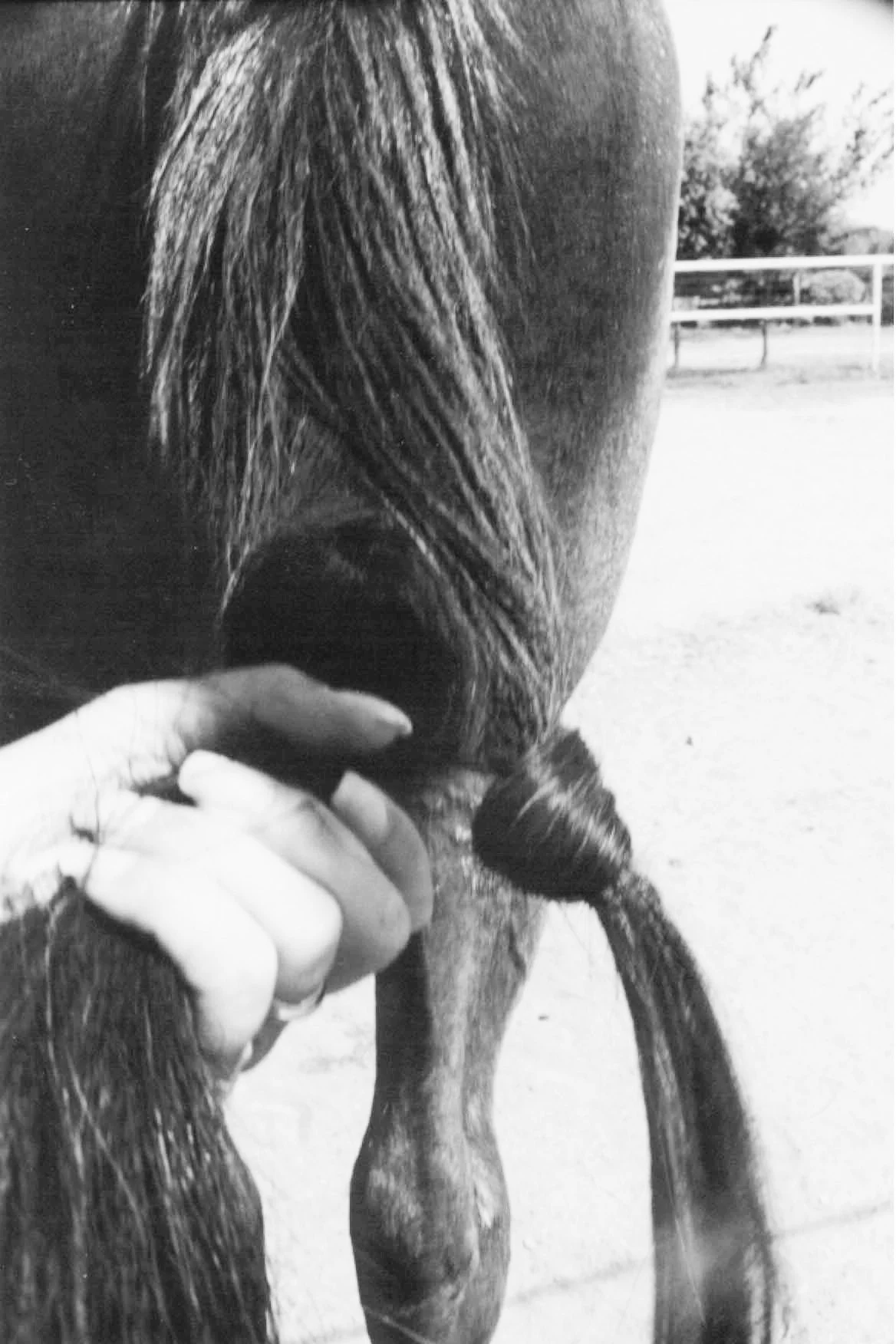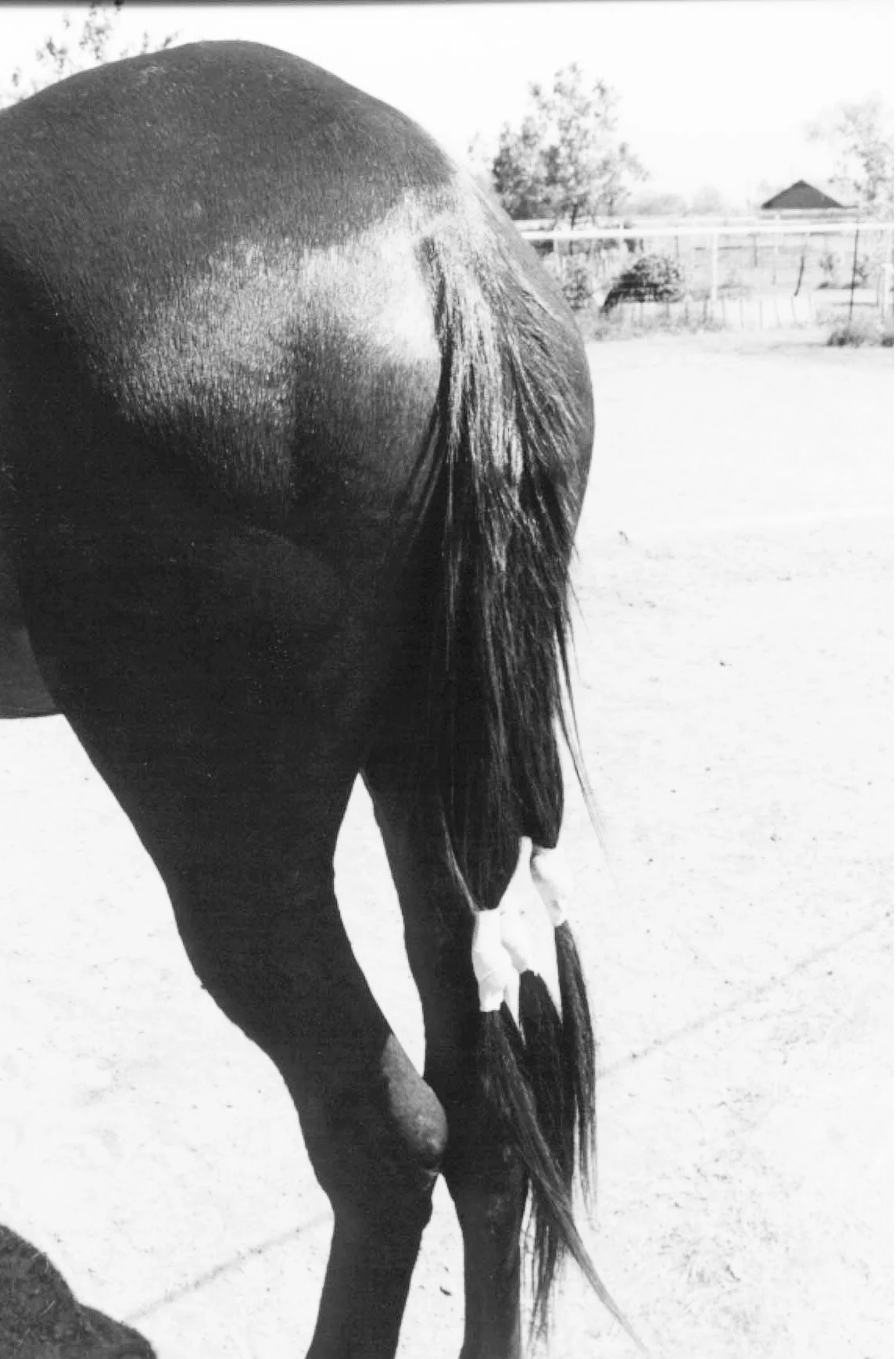PREP TALK for the Show Ring: Growing a Long Tail on Your Mule
From the October 2000 issue of Mules and More
by Lisa Fergason, Equines by Design, Sanger, TX
Divide the animal’s tail into three sections (four or five sections if the tail is really thick). Take one of the sections, put a little bit of a twist into that hank of hair (to keep the hairs together)and put the first half of a knot in it. To make this half a knot, you pull the end of the tail hair through the loop of the same section of hair up close to the dock of the mule’s tail. Pull the knot down tight. While holding it snug,. “wrap” the knot with vetwrap starting above the knot, winding and overlapping around the knot, and finishing it off just below the knot. Keep the vetwrap tight and make sure that you squeeze the vetwrap above and below the knot good so that it holds.
A long, full tail on a show mule really adds to the eye appeal of the animal in the ring, whether it be in a halter or performance class. This fall is a good time to get a program going to ensure that your mule has a nice tail for the upcoming spring shows! Growing the tail to any length on a mule is more difficult since the donkey half of the mule’s heritage doesn’t have much more than a tail dock covered with short hair with a small “broom” of longer hairs on the bottom.
There are several ways to help your mule's tail grow longer; lots of exhibitors swear by unusual and often “secret” methods. Braiding the tail and then enclosing it in a “tail bag” or a sock is popular...but the tail hairs seem to “rat” up where the sock or bag is tied onto the tail and has to be taken out and rebraided every few days. The reiners and the pleasure horse trainers that I rode with showed me the method that I will describe for you...it’s simple, minimal maintenance, and it has worked well for me on the Equines by Design mules.
Putting the tail up in knots is easy to do and will encourage the length of tail for many reasons...the mule won’t lose as much hair “swishing” his tail, it shortens the length of the tail so that it doesn’t drag in the mud and weeds, and the weight of the knot seems to encourage hair growth. I have also found that wetting the tail often with water and keeping it conditioned with human hair conditioner or the equine conditioner “Healthy Hair” helps. If one of the sections loses it’s vetwrap, just rewrap that section if the others look like they’re still pretty secure.
Finish the other sections in the same way, pulling the knot down snugly and toward the ground, then wrapping it securely with vetwrap. Here I have used white vetwrap so that it shows up for the photos. If you use the black on the darker animals, it will be less noticeable. Be sure and pull down on the knot so that the end of the tail section doesn’t stand out to the side like Pippi Longstocking’s braids
At some of the larger mule shows, the past year or two, you’ve probably noticed that some show mules have the false tails tied in... Be careful when you use these. The mule’s tail is almost always thinner and wispier than a horse’s tail...so a false tail is more noticeable on the mule. Make sure the false tail you use is not too long, or it will sway forward underneath the mule’s hind legs as he moves and draw unfavorable attention!
Warning: Don’t ever wrap the tail dock itself with anything tight like VetWrap or a track bandage. Instead of a long tail, you’ll end up with a bobbed tail mule if you cut the circulation off to the tail!.


